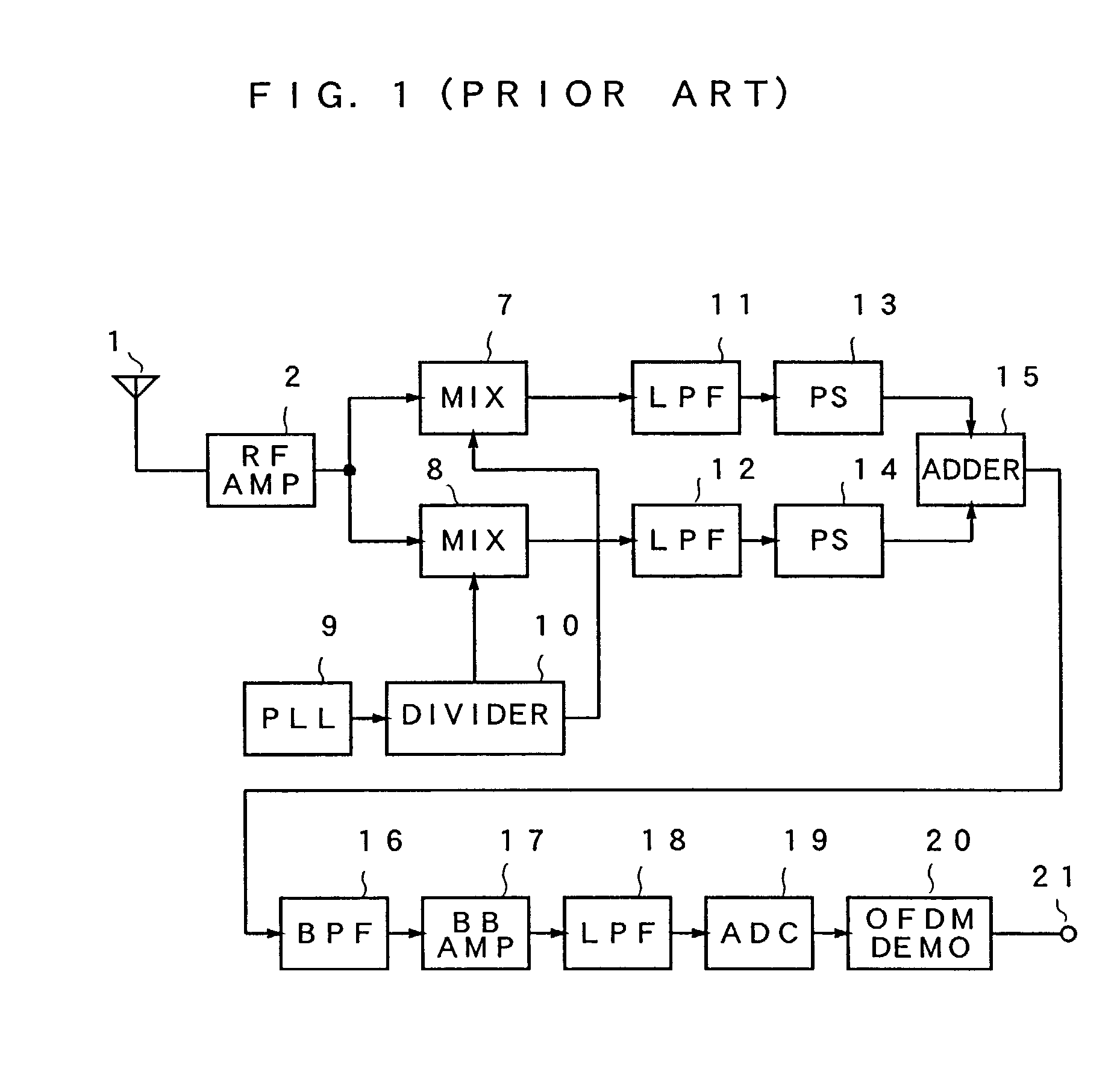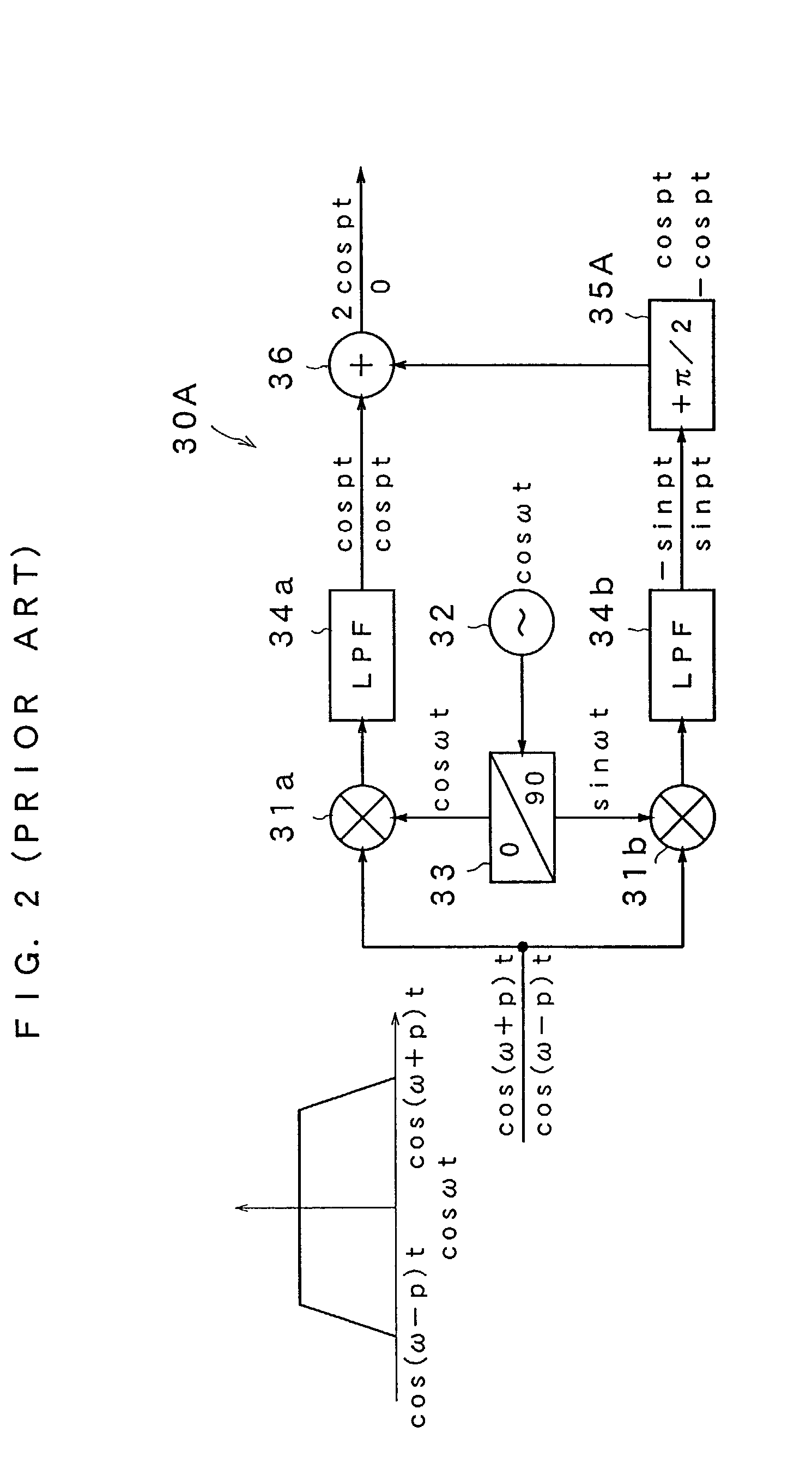Receiving apparatus
a technology of receiving apparatus and receiver, which is applied in the direction of selective content distribution, television system, color signal processing circuit, etc., can solve the problems of difficult ic of the tuner portion, difficult to ensure a high degree of image suppression exceeding 30 db, and increase the scale of the circuit, etc., to achieve excellent image rejection performance, wide-band reception, and high degree of selection
- Summary
- Abstract
- Description
- Claims
- Application Information
AI Technical Summary
Benefits of technology
Problems solved by technology
Method used
Image
Examples
embodiment 1
[0078]FIG. 7 is a block diagram of a receiving apparatus 60 according to Embodiment 1 of the present invention. The receiving apparatus 60 is a receiving apparatus which performs partial reception, i.e., receives one segment. The receiving apparatus 60 is configured so as to include an antenna 61, an RF amplifier 62, a mixer 63, a PLL 64, a BPF 65, an IF amplifier 66, mixers 67 and 68, a PLL 69, a phase shifter 70, low pass filters (LPF) 71 and 72, phase shifters 73 and 74, an adder 75, a band pass filter (BPF) 76, a base band amplifier (BB amplifier) 77, an LPF 78, an AD converter (ADC) 79, an OFDM demodulator 80, a transport stream output terminal (TS output terminal) 81 and a control section 82.
[0079]The RF amplifier 62 is an amplifier which amplifies an RF signal including an ISDB-T signal received by the antenna 61. The mixer 63 is a circuit for converting a frequency into a first intermediate frequency fIF1 using an oscillation signal (local oscillator frequency fLO1) outputte...
embodiment 2
[0108]A receiving apparatus according to Embodiment 2 of the present invention will be described. FIG. 12 is a block diagram showing a structure of a receiving apparatus 90 of this embodiment. The same portions as those of the receiving apparatus 60 of Embodiment 1 shown in FIG. 7 are indicated by the same reference numerals and a detailed description thereof will not be repeated. The receiving apparatus 90 is configured so as to include an antenna 61, an RF amplifier 62, a mixer 63, a PLL 64, a BPF 65, an IF amplifier 66, mixers 67, 68, a PLL 69, a phase shifter 70, low pass filters (LPF) 71, 72, base band amplifiers (BB amplifiers) 201, 202, AD converters (ADC) 91, 92, a complex multiplier 93, a numerical control oscillator (NCO) 94, digital LPF 95, 96, an OFDM demodulator 97, a transport stream output terminal (TS output terminal) 98 and a control section 99.
[0109]The ADC 91 is a circuit for converting an analog I signal outputted from the BB amplifier 201 into a digital signal. ...
embodiment 3
[0146]Next, a receiving apparatus 60D according to Embodiment 3 of the present invention will be described. In accordance with this embodiment, two series of receiving apparatuses of Embodiment 1 are arranged in parallel in order to improve fading durability at a time of mobile reception and a space diversity receiver is formed. In this case, two series of OFDM demodulators 80 shown in FIG. 7 are prepared and a selection or weighted composition is performed for each carrier at FFT outputs of the receiving apparatuses, so that 2 series of received signals are integrated.
[0147]FIG. 18 is a configuration view showing a tuner portion of the receiving apparatus 60D of this embodiment. In accordance with the tuner portion of the receiving apparatus 60D, a first tuner portion and a second tuner portion are provided in parallel. The first tuner portion is configured so as to include an antenna 61a, an RF amplifier 62a, a mixer 63a, a PLL 64, a BPF 65a, an IF amplifier 66a, mixers 67a, 68a, ...
PUM
 Login to View More
Login to View More Abstract
Description
Claims
Application Information
 Login to View More
Login to View More - R&D
- Intellectual Property
- Life Sciences
- Materials
- Tech Scout
- Unparalleled Data Quality
- Higher Quality Content
- 60% Fewer Hallucinations
Browse by: Latest US Patents, China's latest patents, Technical Efficacy Thesaurus, Application Domain, Technology Topic, Popular Technical Reports.
© 2025 PatSnap. All rights reserved.Legal|Privacy policy|Modern Slavery Act Transparency Statement|Sitemap|About US| Contact US: help@patsnap.com



